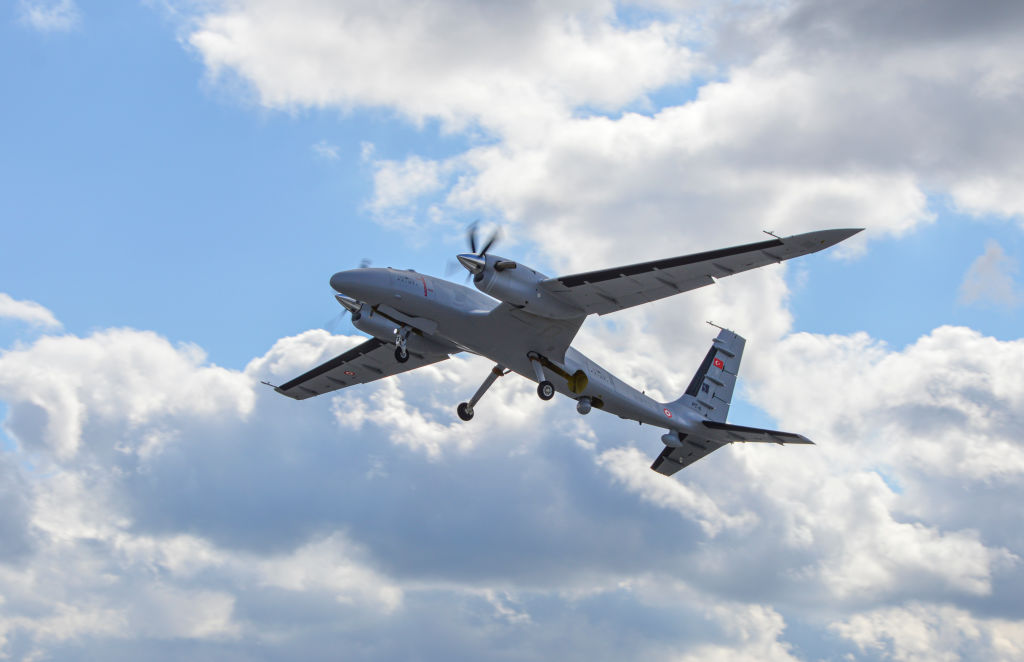The Sudanese Armed Forces (SAF) have deployed a sophisticated new weapon in their fight against the paramilitary Rapid Support Forces (RSF): the locally-produced Safrouq drone, which is packed with anti-jamming technology and has a range of 600 kilometers.
The Safrouq is a response to the RSF’s employing Belarus’ Groza-S electronic warfare system to identify and jam or trick the SAF’s incoming drones.
The Safrouq represents the latest technological advancement as both sides of the conflict shift their tactics to airborne weapons and away from ground forces, which have largely reached a stalemate.
The Safrouq can be used for reconnaissance, but it was designed to be a one-way attack (OWA) vehicle, also known as a kamikaze. It is also an upgrade from modified off-the-shelf drones both sides have used for kamikaze attacks in recent months.
The Safrouq debuted in July at the International Defence Industry Fair (IDEF) in Istanbul. Turkey continues to back the SAF and Sudan’s de facto leader, Gen. Abdel Fattah al-Burhan, politically and militarily through the sale of Bayraktar TB2 and Akinci drones.
The Turkish drones proved a key component in the SAF’s ability to drive the RSF out of Khartoum this year. The RSF claims to have shot down several of the Turkish drones, including an Akinci drone taken down over West Kordofan in September.
The RSF’s success against the drones “expose the fragility of unmanned superiority in a war where foreign-supplied defenses are levelling the aerial playing field,” according to Military Africa.
The RSF has increased its own drone use from its base in Nyala, South Darfur, using Chinese-made FH-95 kamikaze drones. Many of the RSF’s drones are designed to fly long distances into SAF-held territory and loiter above potential targets waiting to strike.
The RSF used long-distance drones launched from Darfur to attack Port Sudan, targeting an airstrip where the SAF’s Bayraktar drones were based. The SAF now stores the drones underground.
In recent weeks, the RSF used its loitering drones to attack a power station in Omdurman, an oil refinery in Khartoum and a weapons factory in Yarmouk. In early October, RSF drones struck a hospital and residential neighborhoods in el-Obeid, the capital of North Kordofan.
In July, Sudanese troops shot down an RSF kamikaze drone over the cities of al-Dabbah and Merowe in Northern State, a region that has remained largely untouched by the conflict.
The RSF has been able to threaten Northern State since taking control of the Owaynat Triangle, a key trade route, that borders Libya and Egypt in northwestern Sudan. In response, the SAF has boosted defenses around military sites in the region, adding jamming equipment and antiaircraft weapons to counter a potential drone attack.
The RSF also uses drones to assassinate prominent figures. Al-Burhan survived an attempt during a military graduation in Red Sea State in 2024.
Analysts note that the shift toward drone-based aerial campaigns increases pressure on soldiers and militia members tasked with defending key locations. However, those attacks don’t necessarily translate into territorial gains by either side.
“From a strategic calculus perspective, losses suffered by one party do not necessarily lead to gains for the other,” analyst Albadawi Rahmtall wrote recently in Military Africa.
“Air superiority unlinked to the ability to exploit ground conditions and alter military geography diminishes the value of airstrikes and reduces their military and political significance,” Rahmtall added.

